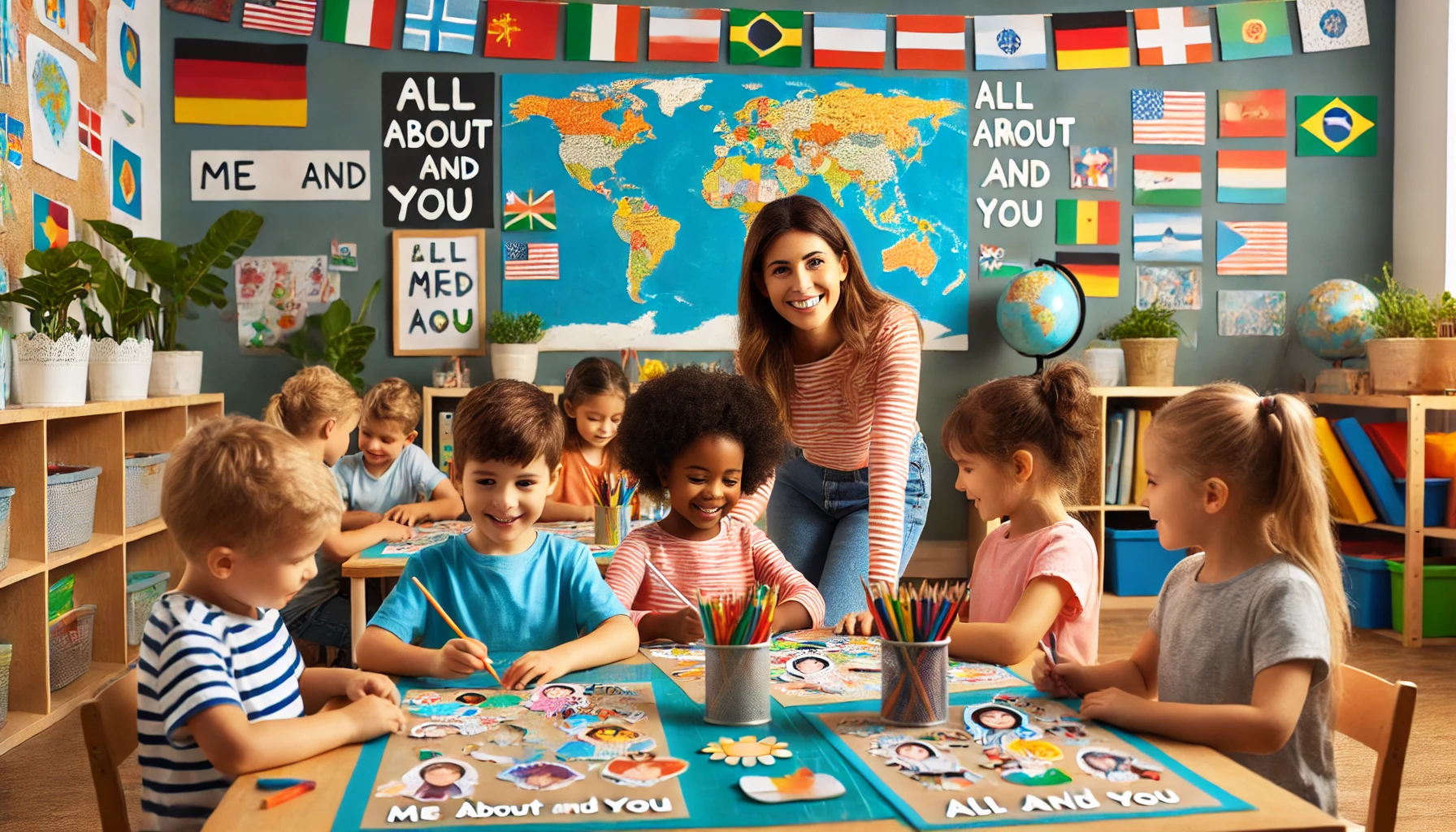How to Teach Young Children About Celebrating Differences
Children are naturally observant and curious about the world—and that includes the people in it. Teaching them to celebrate differences from an early age helps build empathy, inclusion, and respect. Whether it’s about race, abilities, traditions, languages, or family structures, helping kids embrace diversity fosters a more compassionate and accepting generation.
Why Teaching About Differences Matters
- Builds empathy and kindness
- Encourages acceptance and respect
- Prevents bias and exclusion
- Promotes curiosity and cultural appreciation
- Supports confident, inclusive social skills
1. Explain Differences in Simple, Positive Terms
Start with the basics.
Activity Idea:
Say: “Everyone is special, and we’re all different in wonderful ways.”
Use visual cues—books, dolls, or family photos showing diversity.
Ask: “What makes you special? What makes someone else special?”
What Kids Learn:
- That differences are normal and beautiful
- Confidence in their uniqueness
- Respect for others’ individuality
2. Use Books That Highlight Diversity
Stories help children connect emotionally.
Activity Idea:
Read books like All Are Welcome by Alexandra Penfold, The Family Book by Todd Parr, or I Am Enough by Grace Byers.
Discuss: “How were the characters alike and different?”
Create a drawing of your family and talk about how it’s unique.
What Kids Learn:
- Awareness of different cultures, abilities, and appearances
- Appreciation through storytelling
- Empathy for various experiences
3. Celebrate Cultural Traditions Together
Introduce global perspectives in fun ways.
Activity Idea:
Choose a different culture to learn about each month.
Explore foods, songs, languages, or holidays from that culture.
Make crafts, decorations, or flags inspired by what you learn.
What Kids Learn:
- Curiosity about the world
- Respect for traditions and values
- Shared excitement in discovery
4. Encourage Questions Without Judgment
Make it safe to be curious.
Activity Idea:
When your child asks about someone’s appearance, abilities, or background, respond calmly and positively.
Say: “That’s a great question. People look and move in all sorts of ways.”
Provide simple facts and encourage empathy.
What Kids Learn:
- That curiosity is okay and normal
- How to ask respectfully
- That it’s good to learn from differences
5. Create an “All About Me and You” Project
Highlight similarities and differences.
Activity Idea:
Have your child make a collage about themselves—their skin color, family, language, likes, etc.
Then compare it with another child’s collage and talk about what’s the same and what’s different.
Celebrate both!
What Kids Learn:
- Pride in their identity
- Acceptance of others
- Joy in discovering uniqueness
6. Use Inclusive Language Daily
Model acceptance in everything you say.
Activity Idea:
Use phrases like: “Families come in all shapes and sizes,” or “Some people use wheelchairs, and that’s okay!”
Avoid stereotypes in your own speech.
Be intentional about welcoming language.
What Kids Learn:
- How to speak respectfully
- Normalization of differences
- The impact of inclusive vocabulary
7. Play With Diverse Toys and Media
Representation matters.
Activity Idea:
Choose dolls, books, and shows that reflect many types of people—different races, abilities, family structures, and cultures.
Use these toys in pretend play: “Let’s pretend our friends are having a celebration!”
What Kids Learn:
- Comfort with diversity
- Representation and fairness
- Familiarity with inclusion
8. Reflect on Kindness and Inclusion
Wrap up the day with reflection.
Activity Idea:
Ask: “Did you meet someone new today? How were they different or similar to you?”
Praise inclusive behavior: “You invited everyone to play—that was thoughtful!”
Use a kindness chart to celebrate open hearts.
What Kids Learn:
- Self-awareness
- Motivation to include others
- Growth in empathy
Final Thoughts
Teaching young children to celebrate differences helps them grow into inclusive, thoughtful individuals. Through books, stories, crafts, and open conversations, they learn that diversity is not only normal—it’s something to be celebrated. These early lessons foster kindness, curiosity, and a deep respect for the world and everyone in it.
